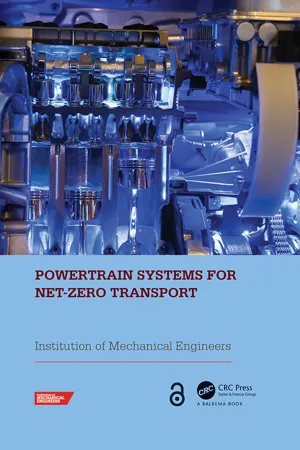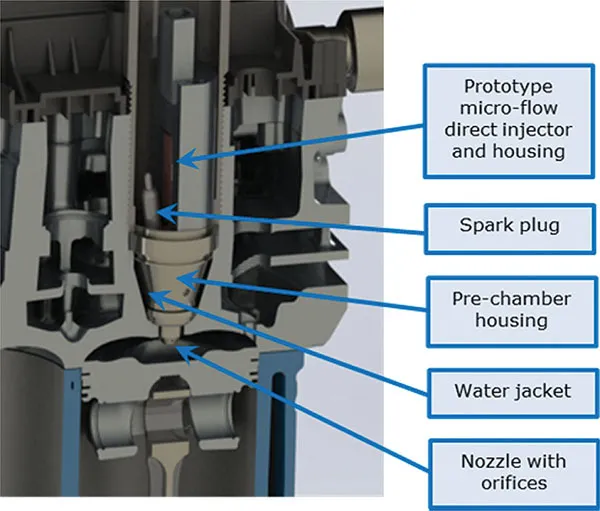
Powertrain Systems for Net-Zero Transport
- 374 pages
- English
- ePUB (mobile friendly)
- Available on iOS & Android
Powertrain Systems for Net-Zero Transport
About This Book
The transport sector continues to shift towards alternative powertrains, particularly with the UK Government's announcement to end the sale of petrol and diesel passenger cars by 2030 and increasing support for alternatives. Despite this announcement, the internal combustion continues to play a significant role both in the passenger car market through the use of hybrids and sustainable low carbon fuels, as well as a key role in other sectors such as heavy-duty vehicles and off-highway applications across the globe.
Building on the industry-leading IC Engines conference, the 2021 Powertrain Systems for Net-Zero Transport conference (7-8 December 2021, London, UK) focussed on the internal combustion engine's role in Net-Zero transport as well as covered developments in the wide range of propulsion systems available (electric, fuel cell, sustainable fuels etc) and their associated powertrains. To achieve the net-zero transport across the globe, the life-cycle analysis of future powertrain and energy was also discussed.
Powertrain Systems for Net-Zero Transport provided a forum for engine, fuels, e-machine, fuel cell and powertrain experts to look closely at developments in powertrain technology required, to meet the demands of the net-zero future and global competition in all sectors of the road transportation, off-highway and stationary power industries.
Frequently asked questions
Information
Session 1: IC Engines for light-duty vehicles
Combustion sensitivity to charge motion in a dilute jet ignition engine
ABSTRACT
1 Introduction
1.1 Background

Table of contents
- Cover
- Half Title
- Title Page
- Copyright Page
- Table of Contents
- Organising Committee
- Session 1: IC Engines for light-duty vehicles
- Session 2: IC Engines for heavy-duty and off-highway
- Session 3: Engines with sustainable fuels (e.g hydrogen, e-fuels, biomethane)
- Session 4: Simulation, modelling and experimental techniques
- Session 5: Real-world Driving Emission (RDE) and emissions analysis
- Session 6: Real-world Driving Emission (RDE) and emissions control systems
- Session 7: Powertrain development systems and analysis
- Session 8: Powertrain development systems for hybrid electric vehicle
- Author index